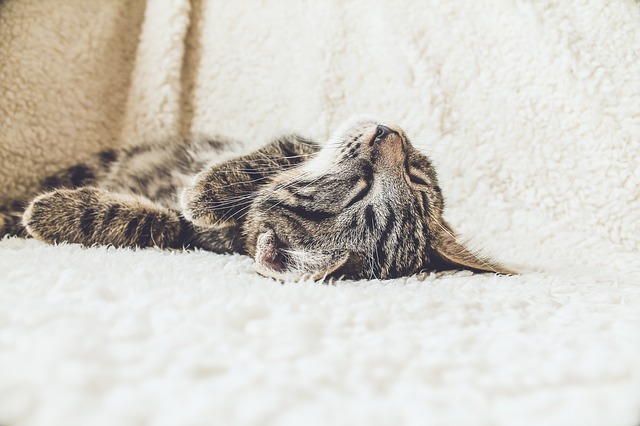This is a lucid dreaming technique for those of you who want to be able to learn how to lucid dream really fast, in less than 5 minutes or so. I’ll reveal the name of the method in a second, but just know that it’s not anything you’re expecting like the WILD, WBTB or DILD.
I’ve named this technique the 90ILD, or the 90 induced lucid dream.
The reason for that is that it involves cutting your sleep into 90 minute sections (the actual length of most of our sleep cycles) throughout the entire night.
I know you’re expecting a simple method with just a few steps, but this method actually has 7 steps. Don’t worry though, they’re very easy to understand, and anyone can use this technique.

You don’t have to be a certain age, or have a certain level of experience to lucid dream in 5 minutes using this method. I’ll get to the steps in just a second, but first I want to tell you what you can expect and what to bear in mind before starting.
Fundamentals before you start
So before you do anything, make sure you’re doing/have done these things:
- Have a dream journal and be writing your dreams down every morning
- Be meditating every morning for about 10 minutes focusing on your breathe
- Have a positive mental attitude, and really believe you can and will lucid dream
- Be doing reality checks or tests throughout the day and always reality checking when you see or experience something unusual, strange, scary, exciting, or emotionally charged
What to expect from the 90ILD technique
So what you can expect from this technique, is at least 4-5 vivid dreams with 1-2 of them being lucid, on your first night of trying it. Pretty cool, right?
This will usually happen for most people who try this, with about a 90% success rate or so. If you follow the steps, it’s hard to go wrong with this technique which is why I like it so much!
The only thing is, you might feel tired the next day and you’ll certainly not be able to do this technique every single night. This is intended to be a lucid dreaming technique for those who are struggling, and just want to experience a lucid dream to motivate them to carry on learning.
Once you’ve used this technique and experienced some lucid dreams, you should avoid doing it for many more days in a row, and instead focus on learning other softer techniques like the MILD, the DILD or something similar.
In terms of that actual lucid dreaming experience, here are some things you might find interesting about lucid dreaming, to explain what it’s going to feel like. This is for those who are new or haven’t experienced it before, and want to know what it feels or looks like:
How to lucid dream in 5 minutes with the 90ILD technique
As I said this is a technique I created called the 90 induced lucid dream or the 90ILD. I wanted to create something that would have such a high success rate, that it could be used to encourage beginners who just want that first adventure to motivate them to learn more.
Here’s how and why it works
Every night we experience multiple dreams, but most of us FORGET these dreams before we’ve even woken up. In fact, almost every single sleep cycle (90 minute chunk of time) contains a chunk of REM sleep which has dreams.
This means if you were able to recall the dreams you were already having, there’s a good chance you’d be lucid in at least one of them. Think about it like this:
If every night you typically remember dreams from your last sleep cycle (The one just before you wake up), you’re missing out on the other 4-5 sleep cycles. By interrupting your sleep after each sleep cycle, you give yourself 4-5 MORE CHANCES of remembering the dreams you’re already having.

Combine that with lucid dreaming intention and induction intent, and you have the perfect storm.
So this is how it works, there’s going to be a bit of preparation for this technique but once it’s done, it’s done forever and you can just keep trying night after night (IF YOU WANT and you’re not too tired.
As I said, the most important thing here is the alarm (90 minute timer), your dream journal, and your intention. They’re all equally important for the 90ILD technique and I think it’s important to not skip over any details here. Let’s just jump into the steps, and I’ll explain a bit more about the technique at the end.
1: Prepare your room to lucid dream
Firstly, you want to make your room like a HAVEN for lucid dreaming.
Have posters of extra-ordinary scenes from superhero movies, fantasy movies etc. Make investments into things like salt lamps, mood lighting, mandala wall flags etc. You’ll need some soft lighting like a salt lamp or mood lighting because you’ll be writing in your dream journal throughout the night, in the pitch black if you didn’t have the mood lighting.
You want to feel almost like you’re in a dream the moment you step into your bedroom. This really helps with your mindset, and you’ll be much more likely to lucid dream more often. You can find certain things online but here’s what I would suggest you get:
These things really help to set the scene and make your room super relaxing and good for inducing lucid dreams. You can of course choose anything you’d prefer, but those things I find relax me really well. Some people also like the sound of a white noise machine as well, but it’s not for everyone.
Importantly though, make sure your room is able to go DARK.
Blackout curtains are useful, but not essential. As long as you can make it pretty dark in there, you’re fine. Also, it’s useful to be able to have no sounds in the room.
This means if you have a noisy computer running in the background, ideally turn it off or make sure it’s not making noise when you’re going to sleep. In terms of light, the mood lighting and salt lamp are fine, but try and remove anything that’s blinking like charging lights or LEDs.
2: Prepare your bed
Your bed needs to be optimised, and a lot of people think I’m joking when I say that but think about it:
Your bed it literally THE surface on which you induce, stabilise, create and experience the entire lucid dreaming phenomenon. So don’t you think that little things like temperature, comfort, position, angle and so on are important?
Of course they are.
I’ve found great success when trying things like inclined bed therapy. Inclined bed therapy is essentially a fancy term for just making your bed angle upwards slightly.
You can do this by stacking a few old books underneath the HEADBOARD side of the bed so that your head is a little bit higher than your feet.
Do that (it helps digestion and sleep quality too), and consider investing in a high quality memory foam mattress. Now, this article is about how to lucid dream in 5 minutes, so I won’t get into this stuff too much but for the future, a good mattress helps.
So you’ve set your bed incline, now think about spraying some lavender pillow spray on the sheets near the top, and your pillow.
This helps sedate/relax you and keep you deeply in the dream. I’ve found lavender works the best but you can try other aromas too. This is the pillow spray I use (On Amazon, very affordable and it can arrive the next day).
3: Set your alarm
So now, your alarm tone. Now I won’t suggest a particular app for this, but in the future (Or maybe now if you’re reading this in a few weeks) my lucid dreaming app has this feature:
You need something to wake you up every 90 minutes, throughout the entire night. Ideally, you also want the alarm to automatically turn itself off after it’s rung out for 2-3 times. This means you don’t need to physically touch your alarm or phone to stop it going off.
If you can, set a relaxing alarm tone, or something that won’t SHOCK you awake. One of the worst habits we have in todays world, is using alarms that are so shrill and sharp that we wake up feeling stressed every single morning.

Why would you ever want to wake up to a shrill alarm, feeling stressed?
But people do.
Learn to awaken to a soothing sound like piano, nature noises, harp etc, something relaxing. But you still actually want the noise to wake you up, so you might need to experiment with this a bit to find the perfect noise. You want something that will wake you up no matter how tired or deeply asleep you are.
4: Wake up every 90 minutes
When you wake up with the alarm tone, you’ll likely be very tired.
This will especially be true if you’ve never done this before, or if you usually sleep all the way through your night with no interruptions. The first time I tried this when I was experimenting, it was tough.
I felt very tired, and I actually in some cases preferred to just go back to sleep and forget my dreams EVEN THOUGH I’d just had a really vivid, intense dream that I should be writing down. Tiredness will make you very lazy, and you’ll have a strong desire to just fall asleep and forget about this technique.

Push through that, because you’ll wake up with a few pages of beautiful, vivid dream memories.
When you read them in the morning you’ll be able to re-experience the dream and feel as if it had just happened. If you go back to sleep however, the dream memories will be lost and you’ll forget them.
So go to bed with the strong intention of lucid dreaming. Tell yourself things like:
- I’m going to lucid dream
- This technique has a 90% success rate, so it’s going to be easy for me
- I’m hacking my sleep and I’ll remember lots of vivid dreams tonight
- I’m about to enter a lucid dream
- I can control my dreams
These affirmations are a bit of a tangent from the MILD technique, which has always been one of my favourites. It’s a soft technique, but in this case, with the 90 minute interruptions, it becomes a slightly harder technique.
5: When you wake up, do THIS
So, when the first alarm goes off after 90 minutes, you’ll likely be tired.
You would have have a full sleep cycle hopefully, including one REM sleep stage. Now actually some people might NOT have had a REM sleep stage yet, and that’s fine. Here’s what’s going to happen:
If your alarm goes off BEFORE your first REM sleep stage, you’ll feel tired, and frustrated the first 90 minutes when your alarm wakes you up. HOWEVER, because the alarm stopped your REM sleep from occurring, you’ll experience REM rebound during the next 90 minute sleep cycle.
This means your second chunk of REM sleep will be longer, and you’ll be far more likely to lucid dream and have vivid intense dreams in that chunk. So the first time or the first 90 minute ‘wake up segment’ is always the worst and least productive.
When you wake up each time, the first thing you should do is a reality check.
This helps avoid false awakenings which could be very common if you don’t do this reality check. As I was developing this technique, I found that without doing that first reality check after waking, I had LOADS of false awakening loops. It got to the point where I didn’t know what was real or not.
Easily avoided by just reality checking as soon as you’re woken up.
Next step, calmly think about your dreams and what you’ve just experienced. Write down in your journal what you can remember, and then as soon as you can, go back to sleep.
The alarm on your phone or device should already be counting down to the next 90 minutes, so you have no time to lose. Get back to sleep but as you fall asleep, focus strongly on lucid dreaming. Think about what you’re going to be once you’re lucid.
Expect that you’ll become lucid so strongly that you’re just preparing and deciding what to do when you enter the lucid dream. Now at this stage, if you’ve not had any dreams that you remember after being woke up the first time, you’ll experience REM rebound.
You’ll have a longer REM sleep period, much more chances of lucid dreaming and vivid dreams, and there IS a higher chance of nightmares here. But don’t worry. This is why you focus on the intention of lucid dreaming as you fall asleep, and telling yourself you’re about to be lucid.
6: Focus on your senses
To take this one step further, you can actually perform a mixture of the WBTB, FILD and SSILD all in one, AS you fall back asleep. You can do this every single time every 90 minutes for the whole night if you want to.
Of course, it’s most effective towards the end of the night because that’s when your REM sleep is the longest, but it doesn’t matter too much. You can have just as vivid dreams in the first sleep cycle as in the last, but it varies from person to person.
Anyway, once you’ve been woken up, and you’re falling BACK asleep, try this:
Focus on all of your senses one by one, paying attention to how each sense feels. Listen to all the sounds you can hear, then focus on what you feel, then what you see (on your eyelids, don’t open your eyes) and so on.
Perform a little ‘circuit’ of your senses where you focus on each sense one by one and then start again at the first sense. This is essentially how the sense induced lucid dreaming technique works.
Another thing you can do is to focus on your fingers. The finger induced lucid dreaming method works on the basis of distraction. As you lay there, falling asleep, you need a way of keeping your mind distracted and focused on something while your body falls asleep and enters paralysis.
An effective way is to focus just one your two first fingers.

People find trying it on a keyboard helps to get the motion..
Imagine you’re alternating really fast between playing or pressing two keys on a piano. Do this, but don’t ever move the fingers. Focus on getting as close to moving them as you can, without actually moving them.
As you do this, you’ll experience powerful waves of paralysis come over you, and you’ll feel like you’re under something heavy. This will pass in a few minutes and you’ll find that you’re looking around a dream, and you’re still awake in your mind (lucid).
So you can see how we’ve combined most of the most effective lucid dreaming techniques into ONE, and made them all more effective. This is something I should have developed a long time ago, but here we are! I’ll explain how I created this technique in a minute.
7: Go beyond just 5 minutes
The reason I mentioned that you can lucid dream in 5 minutes in this technique, is because of the following points:
Most people when they’re trying to lucid dream will type things into google implying they want to just have their first lucid dream as FAST as possible. Things like:
- How to lucid dream in 5 minutes
- How to lucid dream fast
- I want to lucid dream tonight
- How to lucid dream instantly
- How to lucid dream in 9 seconds
And by searching for those things, I understood it to mean this:
You want to lucid dream quickly.
You just want to have the experience as fast as possible, to see if you want to learn more! Like a test drive of a car, you want to see what all the fuss is about, before investing your time (and maybe money) into learning more.

But most techniques take time, practice and require lots of patience.
That’s why I knew I had to develop something that would work almost instantly, for most people. Now, the actual technique itself takes longer than 5 minutes, of course. But the fact is with this technique, you will be able to lucid dream tonight, and that urgency is what I think people are after.
You want SPEED.
So the ‘lucid in 5 minutes’ phrase is to draw in the people like yourself who want to lucid dream as fast as possible and just see what it’s like. Hopefully, you’ll actually try this method, have your first and second lucid dreams and come back here wanting to learn more.
How I developed this lucid dreaming technique
As I’ve said this technique is designed to go from 0 to 100 as fast as possible. It might be a bumpy ride, and you might feel tired, but it’s going to work.
The 90ILD was never meant to be a long term ‘every night’ type of technique.
It’s designed to help beginners have their first and even second lucid dream int he first night they attempt induction. I’ve personally developed it and spent many nights refining this and working out the best way of explaining it.
At first, I just set an alarm for every 20 minutes but it was too often, and I never experienced REM rebound, I just felt perpetually tired. Also at a certain point I stopped entering deep sleep and just had a rough night of light or stage 1-2 sleep.
Trust me, that’s not ideal.
That’s almost like that awful stage of a flight where you feel tired enough to fall asleep but because you’re sitting upright you can never fully drift off, and you’re snapped awake every 20 minutes by falling forward.

So I added more time, and went with the length of a sleep cycle (90 minutes). This helps people remember it and understand how and why it works. By waking up after each sleep cycle, you’re MUCH more likely to remember your dreams, and that’s the thing.
The problem most beginners have isn’t that they can’t lucid dream, it’s that they can’t remember ANY dreams to begin with. So this way, you’ll probably remember at least 3-4 dreams the first night.
Then I took it a step further and added lucid induction techniques for when you fall BACK asleep, along with reality checking when you’re first woken up. These things all combined make the 90ILD technique a very powerful and effective lucid method for ANYONE.
Why it works so well
The reason I think this works so well is because it combines most of the common lucid dreaming techniques.
You might have noticed elements and pieces of the following techniques in this technique. Here’s some of the bits the 90ILD takes from other techniques:
- WBTB: The act of waking yourself up and then going back to sleep
- WILD: As you fall back asleep you’re trying to enter and induce a lucid dream directly, just like the WILD technique
- DILD: The affirmations and mantras you repeat as you fall asleep are similar to the affirmations used in the DILD technique
- MILD: Again, the affirmations are similar here. You can actually perform affirmations in a similar way during the day if you want, just like the MILD.
- SSILD: During the stage where you fall back asleep, I explain that you should focus on your senses one by one and then go back and focus on them again
- FILD: Just like in FILD, you’re going to focus on your fingers and the intention behind moving them as your body actually falls asleep
By the way, here’s a video I made about the most effective lucid dreaming techniques:
And I think because the technique combines all of those, it works very well. Also you’re interrupting your sleep every sleep cycle which would give you more dreams even if you ONLY did that.
Tips and warnings
A few things to remember about this technique:
Your intention to lucid dream, reality checks when you wake, the alarm going off every 90 minutes and the state of your room are all equally important. Please don’t try and skip one or more of the steps. I’ve experimented with this and refined it over several months so trust me, this is the best way of doing it.
You’ll need a good dream journal, and ideally something to illuminate it in the night. Because you’re waking up in the middle of the night you need something to light up the dream journal, hence why I suggested mood lighting and salt lamps.
You might not actually remember any dreams the first time you’re woken up because everyone takes a different length of time to enter REM sleep. The SECOND time however, you will because you’ll have REM rebound so don’t be discouraged.
Plan this for a day where you don’t need to be up in the morning. You’re going to be fairly tired and probably want to sleep during the day until about lunch time after doing this.
During the second half of the night when you’re going BACK to sleep, it’s very possible and likely that you’re going to experience sleep paralysis. This isn’t dangerous, but can be scary. Just remind yourself it’s a stage and a stepping stone to becoming lucid.
The next step
If you’ve tried this, and it’s worked for you then you’re probably wanting something MORE to learn, right? Well, there are lots of things you could learn and do now. Here are a few articles or resources I would suggest that will really help you out.
- Learn to fly in lucid dream: A guide I wrote on flying in dreams that will help you move around the lucid dream
- How to control your dreams: A guide on controlling specific little things in a lucid dream, once you’re already lucid
- The lucid dreaming bootcamp: A step by step guide I created telling you exactly what to practice on each day for 30 days, which forces you to lucid dream. This is what I would suggest you do next
- The MILD technique: Mnemonic induced lucid dreams are very reliable and it doesn’t require you interrupting your sleep. If you have patience, this is the only technique I would suggest you master
- Lucid dreaming superpowers: When you’ve learned how to have reliable lucid dreams, the lucid dreaming superpowers guide is a guide I wrote showing you how to go FAR DEEPER into the lucid dreaming world. You won’t believe what’s possible



